- Home
- Vince Flynn
Memorial Day Page 7
Memorial Day Read online
Page 7
A lone Pave Hawk helicopter, an advanced version of the Blackhawk, came through the mountain pass and sped over the city well out of RPG range, but still within shot of antiaircraft guns and shoulder-launched missiles. In the premission briefing, they'd been shown the reconnaissance photos of the truck-mounted antiaircraft guns, called technicals, and were also warned that there was a real chance the enemy might have surface-to-air missiles.
Having no desire to encounter either, the two pilots continued well past the town and banked hard to come back in and drop off their pay-load. As they descended toward the open field the pilot kept his focus on the patch of land that was punched into the advanced avionics computer, and the instruments that relayed his speed, altitude, and attitude. The copilot scanned the horizon and kept a nervous eye on the missile warning system. Even though visibility was good the door gunners called out their descent and searched the landing area for any hostiles.
As the Pave Hawk landed on the open field, a ten-man Air Force Special Tactics Squadron kicked their hundred-pound packs from the troop compartment and hit the ground running. After sprinting a short distance and fanning out, the men hit the dirt, taking up their defensive positions while the Pave Hawk lifted off, struggling to gain altitude in the thin mountain air.
When the helicopter had reached a safe altitude, the squadron went to work. Retrieving their packs, four of the six men lumbered across the field to secure the main road and cut the phone line while the others consulted their handheld GPS computers and began laying out a precise grid of infrared strobes. Across the field, only a half mile away, they could hear the gun battle building, the cracks of rifle fire spurring them to complete their task as quickly as possible.
They weren't quite finished laying out the grid when they heard a rumbling in the distance. The noise continued to grow as if it was a herd of stampeding cattle headed up the valley. Then the ground started to shake. The six men quickly laid down the remaining strobes and headed off at a near full sprint to their rallying point where they were to set up an aid station and act as forward combat air controllers.
GENERAL HARLEY'S COMMAND-and-control bird arrived over the village and began circling at ten thousand feet. Rapp had his eyes closed and his hands cupped over his headset as he strained to hear the chatter between Sergeant Corrigan and his men. There was already conflicting reports as to whether they had two or three of the big honchos. Rapp would be ecstatic if they had nabbed all three, but if it turned out one of them was killed in the takedown and two of them were alive to be interrogated, he certainly wouldn't shed any tears.
They were barely five minutes into the op, and it was apparent from the movement below that the town had woken up. As they'd predicted, it was no sleepy mountain village. Rapp opened his eyes and looked at the image on the screen before him. A quarter of the moon was out and with the clear sky, the night-vision systems were providing relatively clear pictures. Sergeant Corrigan's position was in the center of the screen. Rapp could make out hostiles moving toward him from all four directions. The numbers weren't alarming yet, but it was still early. As long as the enemy didn't throw anything heavy at them, Corrigan and his team should have no trouble holding out until the reinforcements arrived.
Movement at the far left of the screen caught Rapp's attention. He still hadn't deciphered what it was when the mission's air commander sitting across from him spoke in an even but urgent voice.
"Raptor One, we have atechnical on the move approaching Team one's position engage immediately."
ONEBLACKHAWKand six massive, lumbering MH-47E Special Operations Aircraft made their way into the valley from a different direction than the initial strike force. Loaded down, the large helicopters were too vulnerable to risk flying directly over the village when they weren't sure what they were up against. The pilots had to fly an extra forty-two circuitous miles to reach the target, but none of them complained.
The roar of their twin rotors and powerful turbine engines shook the entire valley and sent a clear signal to every person in the village that something bad was on its way. Thanks to the Air Force Special Tactics Squadron the landing area was lit up like a Christmas tree with infrared strobes that shone bright on the chopper's FLIR screens.
Two of the big choppers came in first and set down, their aft ramps already lowered. Within seconds a pair of Desert Patrol Vehicles (DPVs) eased their way down the ramps and tore across the bumpy field in search of the road that led into the village. The low-slung vehicles were capable of speeds up to eighty mph and could be outfitted with an array of powerful weapons systems. Each carried a crew of three U.S. Navy SEALs; a driver, a vehicle commander, and a gunner who sat in an elevated position behind the other two men.
For tonight's mission the DPVs were armed with big.50-caliber machine guns, 40mm grenade launchers, 7.62mm machine guns, and two AT4 antitank missiles per vehicle. The storage compartments on the sides of the vehicles were packed with extra ammunition and could also be configured to carry stretchers if need be. The vehicles were a potent weapon in open terrain, but in an urban environment they were vulnerable. They lacked the armor that was needed to sit tight and sock it out with opposing forces, so tonight they would use hit-and-run tactics to keep the enemy off balance until the bulk of the force arrived.
As the Desert Patrol Vehicles disappeared into the night a pair of ATVs rolled down the ramps of the Chinooks pulling trailers laden with crates and other equipment. The drivers of each small off-road vehicle cleared the landing zone and headed off to set up the command post and several mortar positions. A dozen Rangers in heavy gear struggled to keep up as they hoofed it over the patchy ground.
The two Chinooks, with their loads delivered, cleared the landing area to make room for their sister ships that were already on approach. Four of the big dull-green transports came in, breaking their single-file formation as they lined up with their marked landing zones. As each bird touched down, Rangers streamed from the aft ramps, breaking off into different-sized groups and heading off to various rallying points. What looked like chaos to the uninitiated was actually a highly orchestrated battlefield deployment of a reinforced U.S. Army Ranger company.
They were the sledgehammer that General Harley intended to wield in routing the Taliban and al-Qaeda fighters from their mountain stronghold. The Rangers were part of the 75th Ranger Regiment, 2nd Battalion. The company had rotated into Afghanistan four months ago, and had already seen plenty of action.
They were trained to fight in every environment, climate, and terrain that could be thrown at them. They excelled at direct-action missions-seizing airfields or capturing key facilities or towns. Using mobile firepower, agility, and speed, they were trained to overwhelm numerically superior forces in short order, and that was exactly what General Harley planned on using them for.
* * *
Eleven
Corrigan walked to the front of the house and poked his head past the splintered and mangled doorframe just in time to hear a bullet whistle past and slap into the side of the mud-brick house. The bearded Corrigan didn't even flinch. He turned in the direction the shot had come from and shouldered his rifle, but before he had the chance to fire, one of his men on the roof took care of the problem for him.
The amount of incoming fire was building steadily. So far none of his men had been hit, but if this kept up it was only a matter of time. He'd put four more shooters on the roof to bolster the two snipers and two light machine guns that were already in place, and all eight of them were busy. It was quickly becoming a target-rich environment, and inside one hundred yards, Delta shooters didn't miss very often, even when the targets were moving.
The potshots weren't what had Corrigan worried. Brave men with machine guns assaulting a team of entrenched Delta Force shooters was little more than suicide, but these were battle-hardened soldiers who'd been in a state of perpetual war for two decades. It wouldn't take long for them to get organized and come up with a better strategy-a strategy that would
probably involve bigger guns and rocket-propelled grenades.
The call came over the unit's internal radio link. "Cor, it's Lou I think you'd better come back here and take a look at something."
Corrigan poked his head around the door frame and looked down the street through his AN/PVS-17 night sight. Two blocks away a tango came around the corner and took up position to fire an RPG. "Hold on a second, Lou."
Corrigan moved reflexively. The PEQ-2 laser designator mounted at the front of his weapon painted the man's chest with a bright red dot and Corrigan squeezed the trigger. The tango crumpled to the ground. Almost immediately, another man scrambled from the cover of the building and reached down to pick up the RPG. Corrigan painted the man's head, dropped him with a single shot, and then ducked back into the house.
"What's up, Lou?"
"I think I found something back here."
Corrigan edged his way up to one of the broken windows and took a quick look outside. He saw two men dart across the street about eighty yards away. One of them made it and the other didn't.
"Can it wait?" he asked, as he surveyed the situation.
Before the man could answer, the thunderous reports of a heavy-caliber machine gun boomed above the din of the steadily building rifle fire. A fist-sized hole was punched in the wall a few feet from Corrigan. The master sergeant hit the floor instantly as chunks of the dry mud brick rained down on him. He crawled back to the front door swearing under his breath.
Thumbing the switch on his radio for the command net, he said in an angry growl, "Condor Five, this is Rattle Snake, where is my air cover?"
"Air cover is on its way in, Rattle Snake. Sit tight."
The voice was calm and professional and it irritated Corrigan to no end. It was easy to stay cool when you were safely above the fray circling at five thousand feet. Come down here on the street and get your ass shot at and see if your voice takes on a more urgent tone.
"I've got a heavy-caliber machine gun firing on my position from the east!"
"I see it, Rattle Snake. Raptor One is inbound."
Before Corrigan could ask for an ETA he heard the telltale "whoosh" of aerial rockets passing overhead. A split second later there was a series of thunderous explosions.
CAPTAIN MILTGuerrero stood at the edge of his hastily established forward command post and looked out across the field through a pair of night vision binoculars. He and his command staff had come in on a Blackhawk and landed at the forward command post set up by the Air Force STS Team. He watched his three platoons, 144 men strong, rush across the open field. Even with their heavy gear they would cover the distance to the edge of the town in five minutes or less. If they ran into any resistance, that estimate could easily double or even triple, but the company commander had contingencies ready in case the enemy put up an unexpected early fight.
General Harley's original plan had called for the Rangers to march immediately to Rattle Snake One's position and create a secure perimeter for the exfiltration of the Delta Team and any prisoners, but after studying the objective, and the surrounding terrain further, General Harley came up with a bolder plan-a plan that was more reminiscent of the way Rangers fought in WWII. They were too far afield to fight with one hand tied behind their backs, and Harley had no desire to lose any of his men due to limited rules of engagement.
For an American officer, however, the desire for force protection always had to be balanced against the lives of innocent civilians. In almost any battlefield situation this was an area as murky as a Louisiana swamp, but here in Southwest Asia the lines between innocent civilian and guerrilla fighter were almost completely indistinguishable. Virtually everybody carried a weapon of some sort, even the young boys. A farmer was rarely a simple farmer. This village was an al-Qaeda and Taliban stronghold used to ferry men and supplies across the border into Afghanistan. Those supplies were used to kill American soldiers. There wasn't an adult in this village who didn't know what was going on.
The brutal reality of war in this violent, fanatical region was that every child over the age of ten was a potential threat, as were their mothers. If they didn't move decisively, if they didn't shock the enemy and keep them off balance, they could quickly find themselves bogged down in a house-to-house fight where they would be outnumbered-an entrenched street-by-street battle against a well-seasoned force that was not known for taking prisoners. If that happened they would have to call in the A-10 Warthogs and possibly a Spooky gunship that would undoubtedly lead to many more civilian deaths. Guerrero bought into the General Patton creed: engagements, battles, wars that were fought quickly, decisively, and with brute force saved lives in the long run. Patton knew well after fighting in WWI what happened when forces got bogged down.
The loss of innocent life was to be avoided if possible, but not if it meant risking the life of a Ranger. Quick and decisive force on the front end would save lives in the end. It was Captain Guerrero who had pushed for the battle's more traditional rules of engagement. Anyone seen running toward the battle carrying a weapon, man, woman, or child, was to be considered hostile and engaged, and any house or structure that was used to fire upon American forces was to be pulverized.
That was worst case and they were hoping to avoid it completely by separating the proverbial wheat from the chaff. Guerrero had a great respect for General Harley that bordered on reverence. Harley had studied the enemy, had gone back and read the history of the country. He'd talked with Soviet officers who had fought and lost in Afghanistan. Harley knew the enemy well, and he knew with relative certainty what they would do when confronted with a surprise attack in the dead of night.
"Sir," a young lieutenant approached the company commander, "the mortar teams are ready."
Part of General Harley's ingenious plan for tonight's operation was to reinforce the young captain's two 60mm mortars. "Have sections one, two, and three begin laying down a barrage at the southern edge of the town, have sections four and five coordinate with Rattle Snake One on where they'd like them dropped, and have section six look for targets of opportunity as directed by the forward observers."
The lieutenant snapped off a salute, glad to hear that the plan hadn't changed. He and his mortar teams had worked diligently to prepare precise coordinates for virtually every intersection and target of potential interest in the village. They had already been in contact with the Air Force forward observer who had reached the edge of town, and one of the Delta shooters on the roof of the target building. The mortar teams were eager to show their stuff. Working in conjunction with forward observers, and using their M-23 mortar ballistic computers, they could drop their 60mm rounds through the sunroof of a parked car. Twelve of the lethal tubes stood ready with enough rounds to level the entire town if necessary.
CORRIGAN LOOKED ATthe twisted, blazing hunk of metal that had almost blown his head off only a few moments ago. Not wanting to diminish his vision he then turned away from the burning wreck and told himself he'd have to remember to buy the boys flying the Apache a cold one.
"Rattle Snake One." The scratchy voice came over his radio. "This is Mustang One. We're going to be at your front door in about thirty, coming in from the west. Do you have any targets for us?"
The SEALs were on their way in with their fast Desert Patrol Vehicles. Great news as far as Corrigan was concerned. The sergeant didn't like a fair fight. He glanced up and down the street. Now that the rocket strike by the Apache had passed he could see the enemy was renewing their efforts. Several rounds struck the road in front of Corrigan, kicking up geysers of dirt. He casually stepped back into the house. "Nothing specific, but watch out for the rooftops."
Corrigan called out for a quick "sit rep" from his team. One by one each man checked in. There were a few minor scrapes, but nothing serious, and his machine gunners asked for some more ammunition for their M240B medium machine guns. Corrigan knew they weren't critically low on ammo, but the plan was for the Desert Patrol Vehicles to drop off some extra supplies and two
light machine guns in case the Rangers got held up.
Corrigan looked out onto the street just in time to see the two low-slung dune buggies come skidding around the corner, guns blazing, their big.50-calibers chewing up the rooftops on either side of the street.
The first vehicle pulled right up to the door, its fat knobby tires gripping the packed dirt road like claws. The second vehicle swung out into the intersection and stopped in the middle of a right-hand turn. The crews in the two vehicles began furiously pumping rounds into anything that moved. Corrigan set his weapon down and grabbed a couple of extra ammo pouches from the vehicle. He tossed them back in the house and grabbed an M249 SAW and more ammo.
The vehicle commander, a chief and a perpetual smart-ass, yelled to Corrigan over the roar of the guns, "Once again, it's the Navy to the rescue!"
Corrigan grabbed his weapon and yelled back, "Rescue my ass! You wanna change spots?"
The Navy SEAL shook his head vigorously. "No thanks! I don't like staying in one place if I don't have to." With his left hand up in the air he gestured wildly for the driver to move out. Turning back to Corrigan, he smiled again and yelled as the driver gunned the engine, "We'll be in the neighborhood! Just call if you need us!"
The two crews were in contact via radio and as soon as the one vehicle began to move, the one holding the corner took off. As per the plan, they were now to drive around the back of the house and drop off more ammunition and another machine gun, and along the way knock the enemy back a bit. After that they were to proceed to the western edge of town where they were to look for targets of opportunity and hold the flank. If needed, they were also in reserve to evacuate any seriously wounded. The six SEALs knew the key to their effectiveness was to hit and move. If they stayed in any one place for too long they might be the ones needing a medical evac.

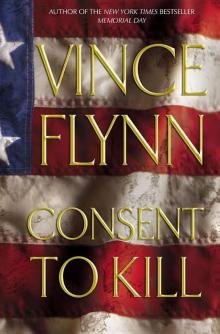 Consent to Kill
Consent to Kill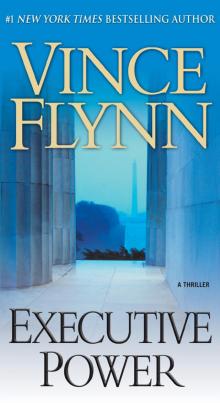 Executive Power
Executive Power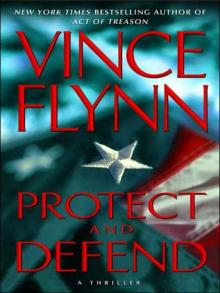 Protect and Defend
Protect and Defend Term Limits
Term Limits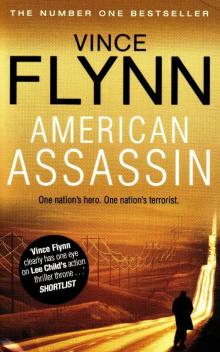 American Assassin
American Assassin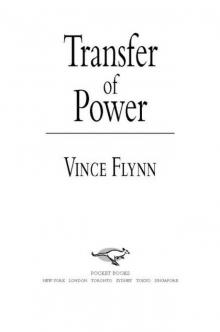 Transfer of Power
Transfer of Power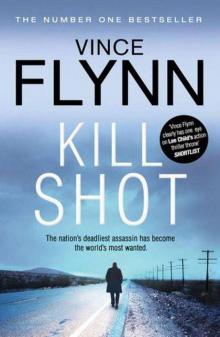 Kill Shot
Kill Shot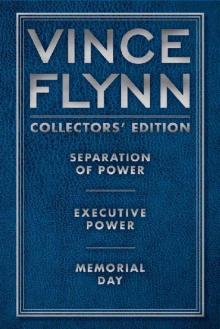 Vince Flynn Collectors' Edition 2
Vince Flynn Collectors' Edition 2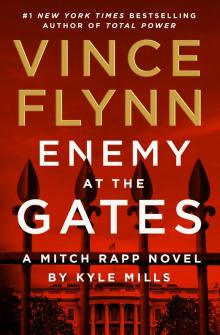 Enemy at the Gates
Enemy at the Gates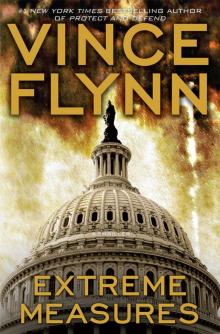 Extreme Measures
Extreme Measures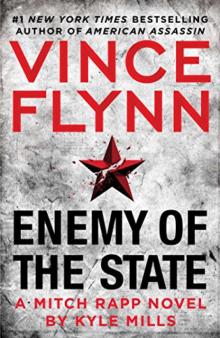 Enemy of the State
Enemy of the State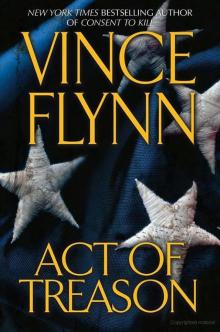 Act of Treason
Act of Treason Pursuit of Honor
Pursuit of Honor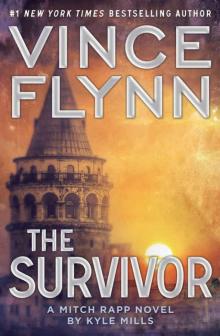 The Survivor
The Survivor Separation of Power
Separation of Power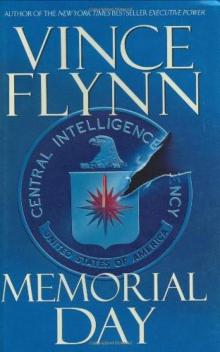 Memorial Day
Memorial Day The Last Man
The Last Man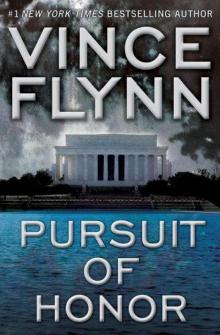 Pursuit of Honor_A Thriller
Pursuit of Honor_A Thriller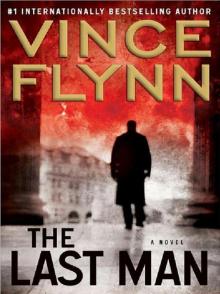 Mitch Rapp 13 - The Last Man
Mitch Rapp 13 - The Last Man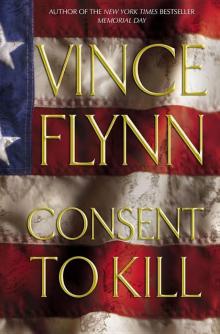 Consent to Kill:
Consent to Kill: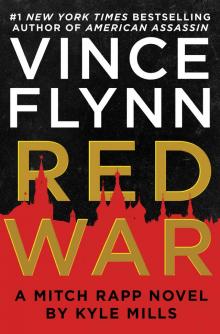 Red War
Red War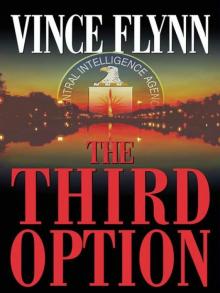 Mitch Rapp 02 - The Third Option
Mitch Rapp 02 - The Third Option Mitch Rapp 05 - Memorial Day
Mitch Rapp 05 - Memorial Day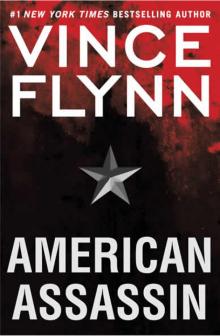 Mitch Rapp 11 - American Assassin
Mitch Rapp 11 - American Assassin Mitch Rapp 14 - The Survivor
Mitch Rapp 14 - The Survivor Mitch Rapp 06 - Consent to Kill
Mitch Rapp 06 - Consent to Kill Term Limits mr-1
Term Limits mr-1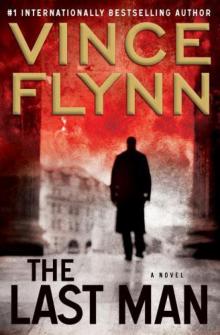 The Last Man mr-13
The Last Man mr-13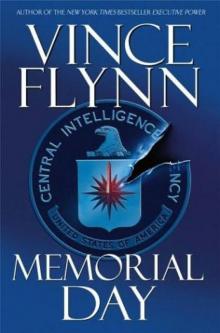 Memorial Day mr-5
Memorial Day mr-5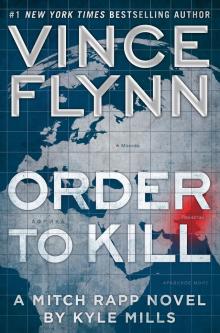 Order to Kill
Order to Kill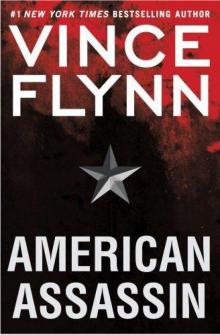 American Assassin: A Thriller
American Assassin: A Thriller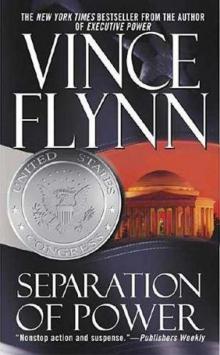 Separation of Power mr-3
Separation of Power mr-3